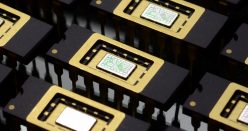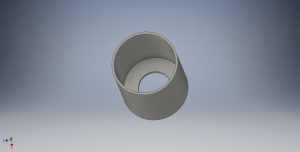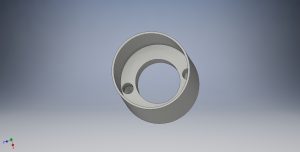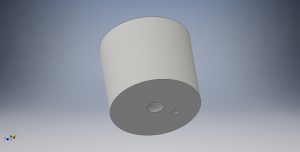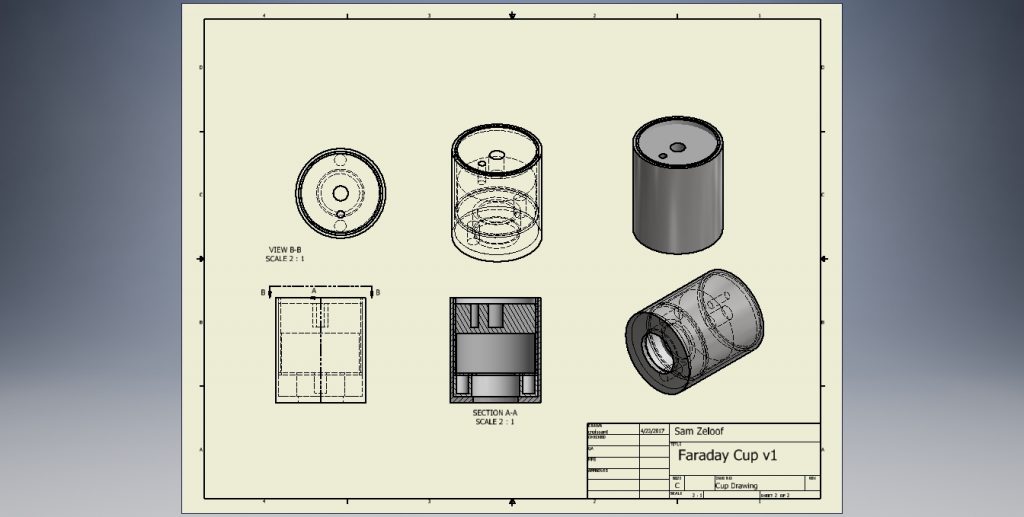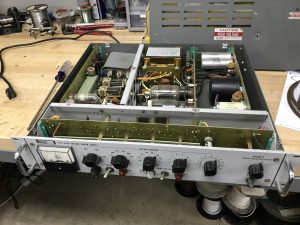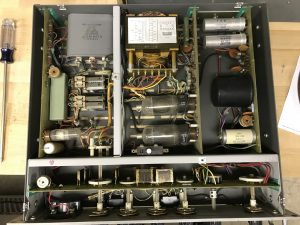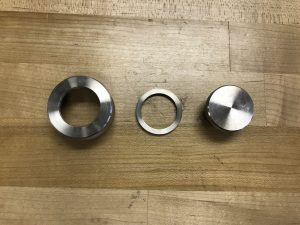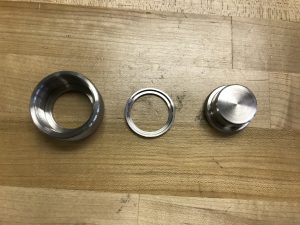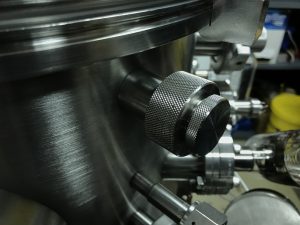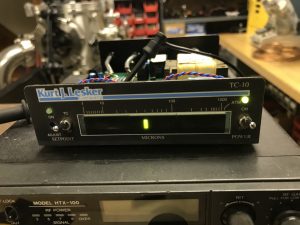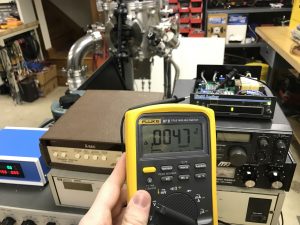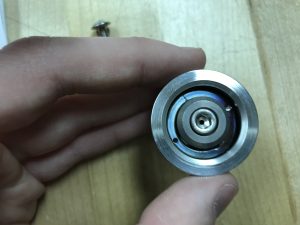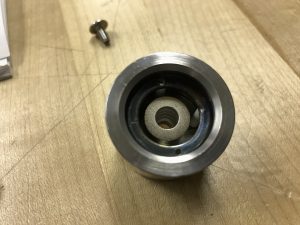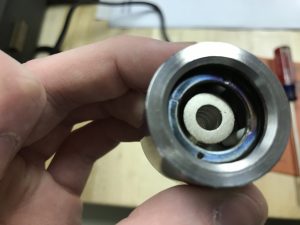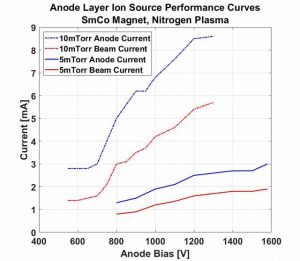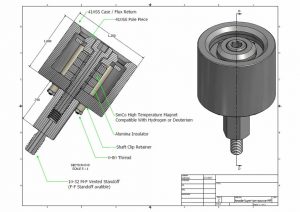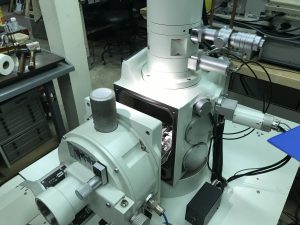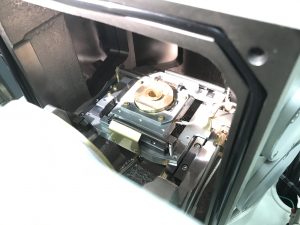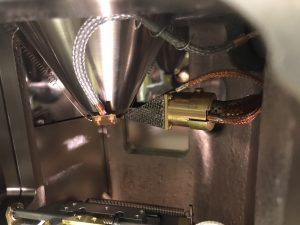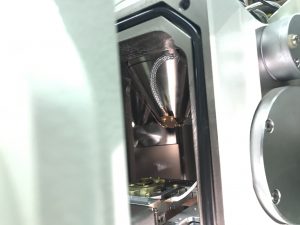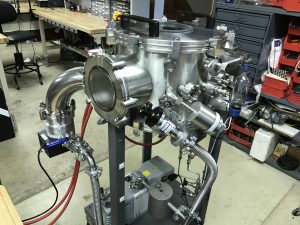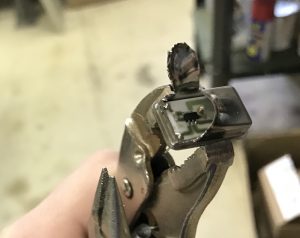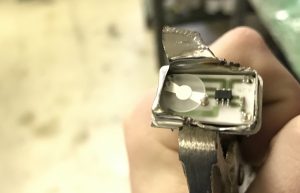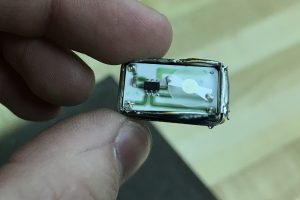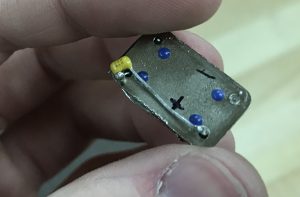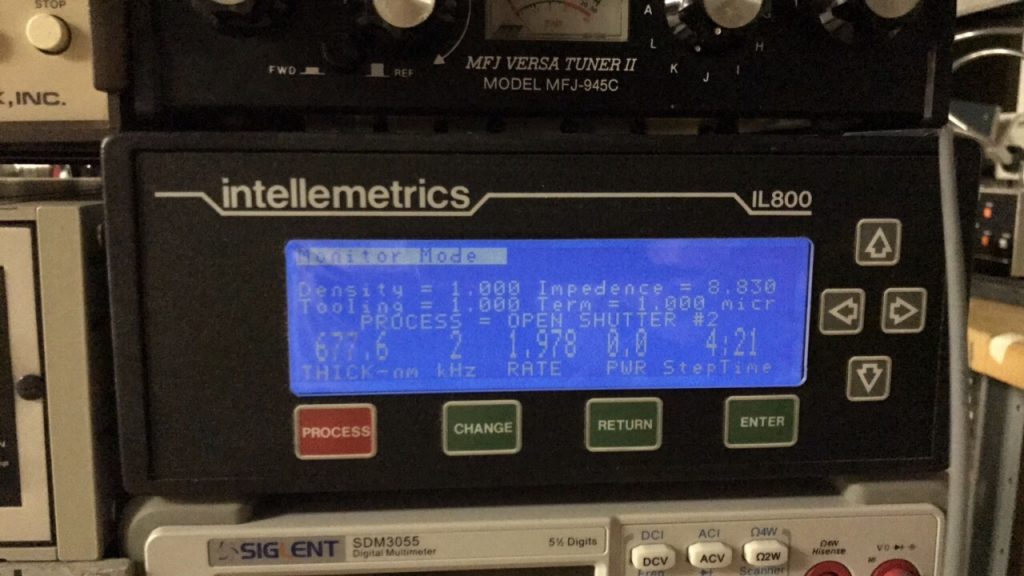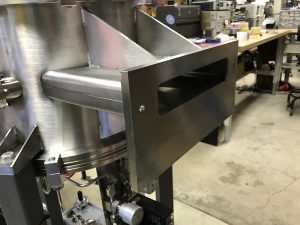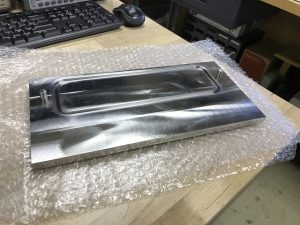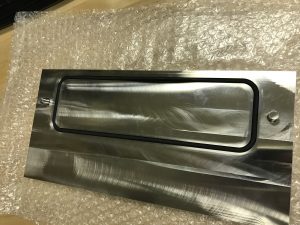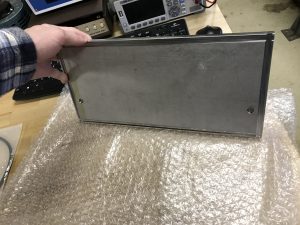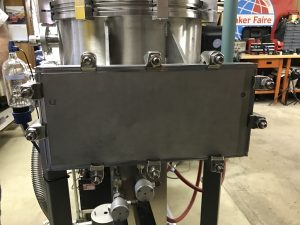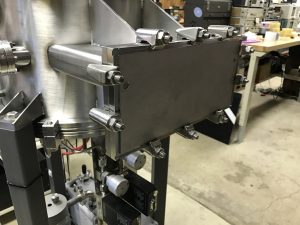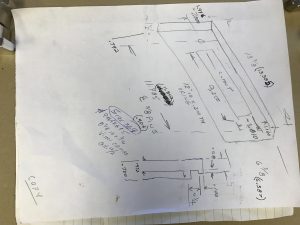CAD (autodesk) files: Faraday Cup
Bias schematic: Diagram
A Faraday cup is an instrument that can be used to measure ion beam currents. I designed this one for testing the anode layer ion source from rtftechnologies.org. It has 2 permanent magnet rods (3/16″ dia x .5″) in the first part of the cup to act as a trap for incoming electrons and the cup can be positively biased to suppress secondary electrons so that the measured current is just the ion beam.
Between the section with the magnets and the collector, there is an interchangeable aperture so you can use different sizes. This was designed to be hand made on a lathe; there is no tolerancing so do not attempt to make it unmodified on a CNC. The body, aperture, and collector are made from stainless steel and the ring which holds the magnets and insulates the collector from the body is plastic (ideally PEEK). The backside of the cup has two blind holes, the center for mounting and the offset hole for BNC connection.
